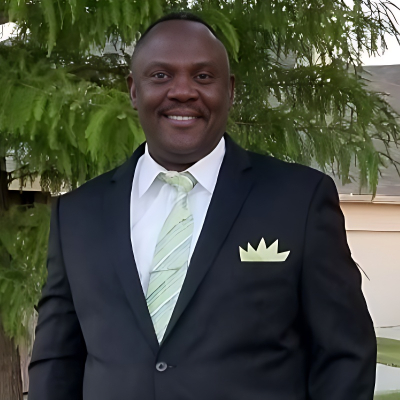How to Manage Adult ADHD With Daily Life and Work Tips

ADHD is often thought of as a childhood disorder but did you know it can persist into adulthood? In the US, 4.4% of adults have ADHD but many go undiagnosed. Lack of awareness can cause problems in personal and professional life. Understanding ADHD in adults is key to managing symptoms and improving life. Here’s how behavioral changes and a daily routine can make a big difference.
Adult ADHD
ADHD is a neurodevelopmental disorder characterized by symptoms of inattention, hyperactivity and impulsivity. While these symptoms are well known in children, adults experience them differently. Hyperactivity may show up as restlessness, and impulsivity is impulsive decision-making without considering consequences.
Common in Adults:
- Difficulty Concentrating: Struggling to focus on tasks that are not inherently interesting.
- Disorganization: Trouble managing time, keeping track of tasks, or keeping an orderly space.
- Forgetfulness: Losing things or forgetting appointments and deadlines.
- Impulsivity: Making impulsive decisions without thinking of the consequences, affecting relationships and careers.
- Emotional Issues: Mood swings, irritability, or low tolerance to stress.
ADHD in Daily Life
ADHD affects many areas of an adult’s life, work, relationships and overall well being. Trouble focusing can mean missing deadlines or poor performance. Impulsivity can strain relationships through misunderstandings or conflicts. Adults with ADHD are more likely to develop other mental health issues like anxiety and depression.
Professional Challenges
- Can’t focus means can’t finish tasks and be less productive.
- Frequent job changes mean career instability due to dissatisfaction or performance issues.
- Impulsive comments or actions can cause misunderstandings and conflicts.
Personal Challenges
- Neglect of loved ones means frustration and strained relationships.
- Impulsive spending means financial instability and poor financial management.
- Stuck means low confidence and self-esteem issues.
Behavioral Changes That Can Help
While medication is often used to treat ADHD, behavioral changes are key to managing symptoms and maintaining focus with ADHD. Try these and you’ll see an improvement in daily life.
1. Cognitive Behavioral Therapy (CBT)
CBT helps you change negative thought patterns and behaviors. For adults with ADHD, CBT can give you tools to manage impulsivity, organize better and solve problems.
- Developing skills to plan, prioritize and do tasks better helps overall productivity.
- Learning to cope with frustration and stress helps emotional regulation.
- Being aware of your behaviors and making conscious changes helps with self-monitoring.
2. Mindfulness and Meditation
Mindfulness can help you focus and reduce impulsivity. Techniques like deep breathing and meditation increase awareness of your thoughts and actions.
- Being present in the moment reduces distractions and improves concentration.
- Lowering anxiety through mindfulness helps symptom management.
- Mindfulness helps you respond to situations calmly and measuredly, not emotionally.
3. Physical Exercise
Physical activity reduces ADHD symptoms by increasing dopamine and norepinephrine levels, as well as the attention and focus neurotransmitters.
- Jogging, cycling or swimming is good for the brain.
- Yoga and tai chi combine physical movement with mindfulness for overall wellness.
- Having a routine is good for discipline.
4. Healthy Diet
A healthy diet is good for the brain. Fish and flaxseed are rich in omega-3 fatty acids, which is good for the brain.
- Fruits, vegetables, whole grains, and lean proteins are nutrient rich.
- Reducing sugar and artificial additives may alleviate hyperactivity and improve focus.
- Maintaining consistent eating patterns stabilizes energy levels throughout the day.
5. Sleep Hygiene
Sleep is important for brain function. A regular sleep schedule and a restful environment can help with inattention and irritability.
- Going to bed and waking up at the same time every day improves sleep and overall health.
- Follow digital detox strictly before bed. No electronic devices mean zero blue light effect, which gives you better rest and relaxation.
- A bedroom is dark, quiet, and cool, which means sleep is comfortable.
Daily Routine
Creating and maintaining a daily routine can help manage ADHD symptoms. Here’s how to start:
1. Use a Planner or Digital Calendar
Keeping track of appointments, deadlines, and tasks reduces forgetfulness and time management.
- Alarms for important events help in time and responsibility management.
- Color coding tasks by category or priority helps with organization.
- Check your schedule at the start and end of the day for better time management and task completion.
2. Break Tasks into Smaller Steps
Big tasks are scary. Breaking them down makes them smaller and less scary.
- Writing down each step creates a task list.
- Setting mini deadlines for each part helps create milestones.
- Celebrating each step completed keeps you motivated with a reward system.
3. Prioritize Tasks
Not all tasks are created equal. Prioritize by urgency and importance.
- Using the Eisenhower Matrix to categorize tasks into urgent, important, both, or neither.
- Spending more time on tasks that move your goals forward focuses on high-leverage activities.
- Focusing on one task at a time gets better results by not multitasking.
4. Minimize Distractions
Create a distraction-free workspace.
- Keeping your area clean reduces visual clutter and a clean space.
- Use noise-canceling headphones or work in quiet areas to control noise distractions.
- Turn off non-essential notifications to limit digital interruptions.
5. Set Realistic Goals
Having goals gives you direction and motivation.
- Make sure goals are specific, measurable, achievable, relevant, and time-bound and follow the SMART criteria.
- Being flexible and adjusting goals when things change allows for adaptation.
- Checking in on your progress towards goals helps you track progress.
Case Study: John’s Journey with Adult ADHD
John, a 35-year-old marketing executive, always felt overwhelmed by his workload. Despite his best efforts, he missed deadlines, forgot meetings, and was disorganized, which affected his relationships at work and home.
After his friend suggested it, John went to see a psychologist and was diagnosed with adult ADHD. Through therapy he learned to make behavioral changes and create a daily routine.
John started using a planner, prioritizing tasks and doing mindfulness exercises. Over time his work improved and his relationships became more peaceful.
Importance of Medication
While behavioral strategies are important, medication can also help with ADHD.
Common Medications:
- Methylphenidate and amphetamines increase dopamine and norepinephrine levels to address ADHD symptoms.
- Atomoxetine and certain antidepressants are non-stimulant options when stimulants aren’t an option.
Considerations:
- See a doctor to get prescribed and monitored.
- Tell your doctor if you experience any side effects.
- Combining medication with behavioral strategies works best.
Working with ADHD
ADHD can be tough in the workplace. Here are some tips to help:
1. Open Communication
- Talking to your employer or HR about your ADHD can help you become more productive.
- Flexible scheduling or modified workloads are reasonable adjustments in the workplace.
- Reasonable accommodations under the Americans with Disabilities Act (ADA) mean employees with ADHD are protected.
2. Technology
Productivity apps and tools help with tasks and deadlines.
- Visual task management with project management software like Trello or Asana.
- Note-taking apps like Evernote or OneNote keep information at your fingertips.
- Time tracking apps like Toggl keep track of time.
3. Time Management Techniques
The Pomodoro Technique involves working in focused intervals with short breaks.
- Focusing during designated times with structured work sessions increases productivity.
- Avoid burnout and keep your energy up by taking breaks.
- Switch between different types of tasks to avoid boredom with task rotation.
4. Set Boundaries
Learn to say no.
- Don’t overcommit.
- Share with team members when you can delegate.
- Don’t let work intrude on rest and recovery time.
How Important Is Self-Care
ADHD isn’t just about productivity. It’s also about your mental and emotional well being.
Practice Self Compassion
Practicing self-compassion is key for people with ADHD as we can often feel frustrated or have low self-esteem. To combat those feelings we need to incorporate positive affirmations into our daily routine and remind ourselves of our strengths and achievements.
Don’t talk to yourself negatively by challenging and reframing unhelpful thoughts, and practice mindfulness to stay present and engaged. These will help boost your self-esteem and overall well being.
Hobbies
Hobbies are another way to manage ADHD symptoms and boost your mood. Doing things you love can reduce stress and give you a sense of achievement. Try creative outlets like art, music, or writing which can be therapeutic and channel your energy positively.
Physical activities like sports or outdoor adventures give you exercise and fun and are good for your body and mind. Joining clubs or groups with like-minded people can also help you connect with others and feel like you are part of a community.
Build a Support Network
Having a strong support network is crucial for people with ADHD. Surround yourself with supportive friends and family who get what you’re going through and can offer encouragement. Practice open communication by sharing your experiences and challenges with your loved ones so they can get your perspective.
Take the time to educate those around you about ADHD so they can have empathy and understanding. Don’t be afraid to seek professional support from therapists or counselors who can give you specialized guidance and strategies tailored to you. By doing these you can create an environment that helps you grow and navigate ADHD better.
ADHD Myths and Misconceptions
Several misconceptions get in the way.
Myth 1: ADHD only affects children
Fact: ADHD can persist into adulthood. Some children will outgrow symptoms but many won’t.
Myth 2: Adults with ADHD can’t succeed professionally
Fact: Many adults with ADHD are highly successful. With management they can use their strengths.
Myth 3: ADHD isn’t a real condition
Fact: ADHD is a recognized neurodevelopmental disorder backed by research.
Research in ADHD
Ongoing research continues to shed light on ADHD, leading to better treatments and understanding.
Neuroimaging Studies
New neuroimaging allows scientists to see brain activity differences and make accurate diagnoses.
Genetic Research
Understanding genetics leads to new interventions and prevention.
Non-Pharmacological Treatments
Neurofeedback trains individuals to control brain activity. It’s showing promise for symptom management.
Resources for Adults with ADHD
Many organizations offer support:
- CHADD: Support groups and educational materials.
- ADDA: Resources for adults with ADHD.
- National Institute of Mental Health: Research and treatment information.
Conclusion
Living with ADHD as an adult is hard but it’s also an opportunity for growth. By making behavioral changes, creating routines and seeking support you can manage your symptoms.
Remember ADHD doesn’t define you. With the right tools and mindset you can live a fulfilling life. If you or someone you know may have ADHD, reach out to a healthcare professional.
References:
- American Psychiatric Association. (2013). Diagnostic and Statistical Manual of Mental Disorders (5th ed.).
- National Institute of Mental Health. “Attention-Deficit/Hyperactivity Disorder.”
- Children and Adults with Attention-Deficit/Hyperactivity Disorder (CHADD). “Understanding ADHD in Adults.”
Authored By

Shebna N Osanmoh I, PMHNP-BC
Oct 16, 2024
Shebna N Osanmoh is a board-certified Psychiatric Mental Health Nurse
Practitioner with extensive experience across the mental health spectrum. Holding a Master’s in
Psychiatric/Mental Health Nursing from Walden University, Shebna provides compassionate,
culturally sensitive care for a wide range of mental health conditions, emphasizing holistic and
individualized treatment approaches to support patients in their wellness journey.
